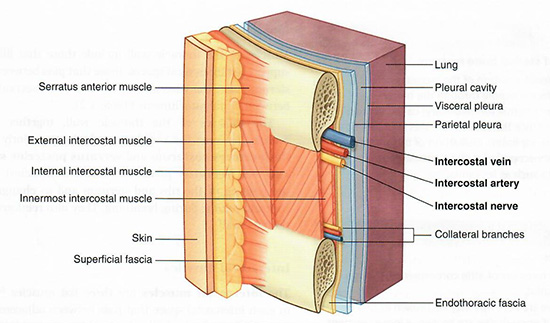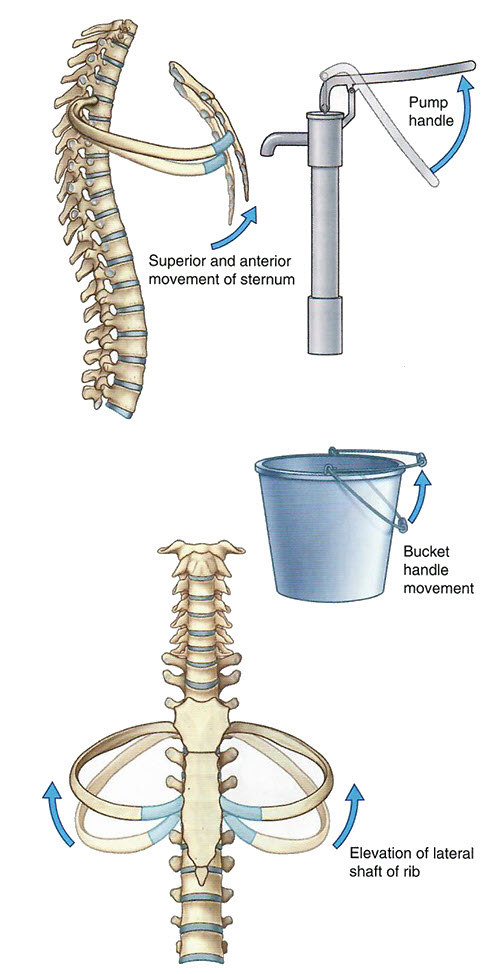
SECTRA TABLE WORK: Page 3 of 5
Respiration involves a coordinated effort between multiple muscle groups during inspiration and expiration. It is performed with the following muscles:
Inspiration (Quiet Breathing):
 |
| Tap on image to enlarge |

| Add the diaphragm, which contracts inferiorly to create negative intrathoracic pressure, drawing air into the lungs. | |
| Add the internal intercostal muscles. | |
| Add the external intercostal muscles. |
 |
| Tap on image to enlarge |

These intercostal muscles stiffen the rib cage to counter negative pressure, and assist in lifting and rotating ribs 2 through 10, increasing thoracic volume.
Think of this motion as a combination of a pump-handle (anterior-posterior expansion) and a bucket-handle (lateral expansion) movement.
The lungs passively inflate in response to the expanding thoracic cavity.
Forced inspiration is accomplished by the following muscles:
Additionally, neck and back muscles assist by elevating the pectoral girdle to increase the transverse thoracic diameter, and extending the spine to increase the superoinferior height of the thoracic cavity.
Upper respiratory tract muscles also relax to reduce airway resistance, facilitating airflow during forced inspiration.